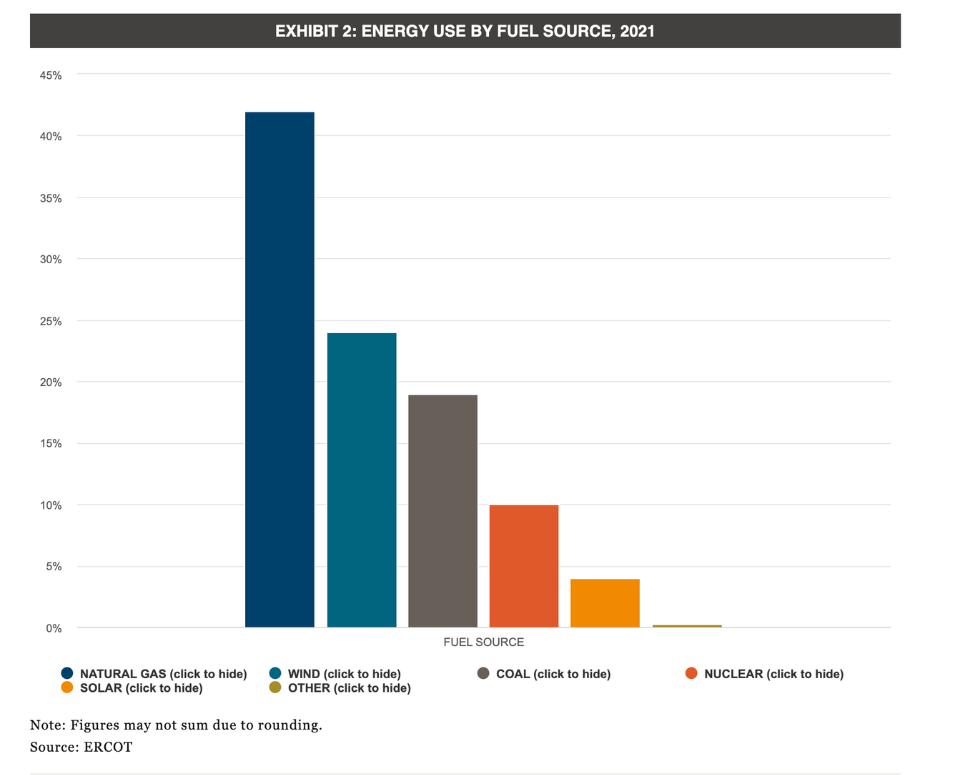Texas, known for its vast energy resources, has a unique electricity generation landscape. A significant portion, approximately 45%, of the state’s electricity is generated from natural gas. This heavy reliance on natural gas as a primary energy source means that electricity prices in Texas are closely tied to natural gas market fluctuations. Let’s delve into some of the sources of Texas power in more detail below.

As you can see from the chart above provided by ERCOT, natural gas makes up almost 45% of all power generation in Texas followed by wind energy and coal – while solar only accounts for less than 5% of total electricity generation on the ERCOT grid.
Natural Gas As A Power Fuel Source
Natural gas as a power fuel source is widely regarded for its efficiency and reliability. It’s a versatile energy source that can be quickly ramped up or down, making it ideal for meeting peak electricity demands. Additionally, natural gas power plants typically have lower emissions compared to coal, contributing to a reduced environmental impact. However, its use is not without controversy. The extraction process, often involving hydraulic fracturing or “fracking,” has raised environmental concerns, including groundwater contamination and seismic activities. Moreover, while cleaner than coal, natural gas is still a fossil fuel and contributes to greenhouse gas emissions, which is a significant factor in the ongoing debate about energy policies and climate change.
Texas’ Push For Renewables
Texas is actively pushing for an increase in renewable energy generation, recognizing the need for a sustainable and diverse energy portfolio. This shift is evident in the significant investment in wind and solar energy, positioning Texas as a leader in wind energy production in the U.S. The state’s vast open spaces and favorable climate conditions make it ideal for large-scale renewable projects. This commitment to renewables not only aims to reduce the environmental impact of energy production but also to ensure long-term energy security and stability, aligning with global trends towards cleaner energy sources. Although today renewables account for a minority of power generation in Texas, the future seems bright for this cleaner source of electricity.
What About Nuclear Power?
In Texas, nuclear power maintains a steady presence in the state’s energy mix, contributing to its diverse energy portfolio. While not expanding at the rate of wind or solar energy, nuclear power in Texas provides a significant and reliable source of baseload electricity, essential for meeting the constant demand. Its role in the state’s energy landscape is marked by stability rather than rapid growth, with existing plants continuing to operate efficiently. The future of nuclear power in Texas, amidst the rise of renewables and natural gas, remains a subject of ongoing energy policy discussions.



